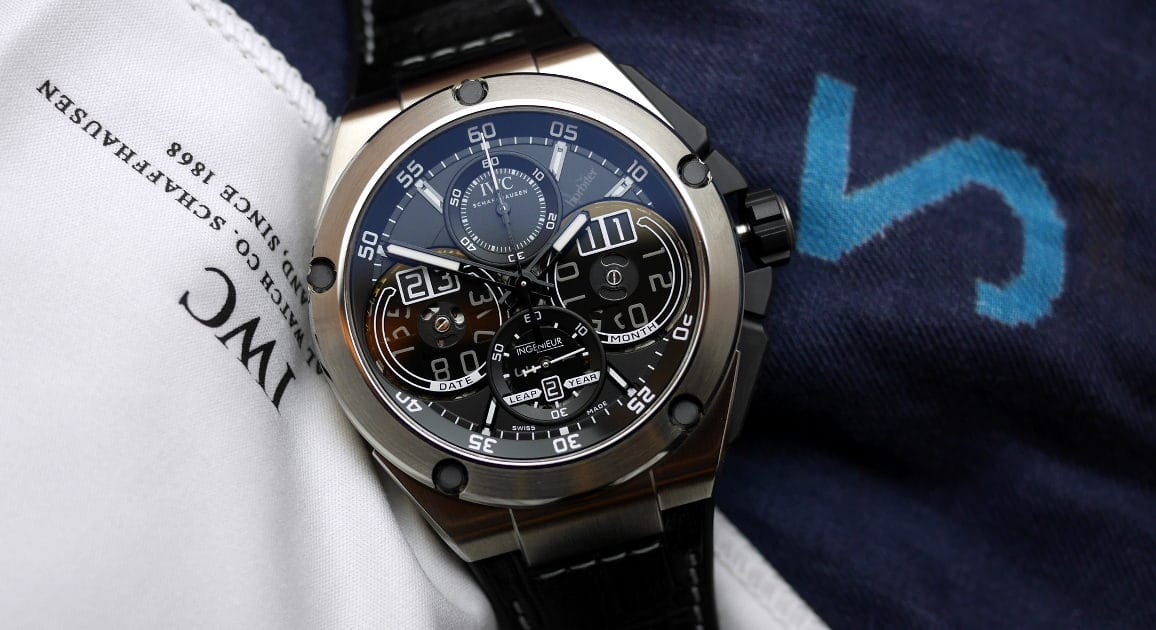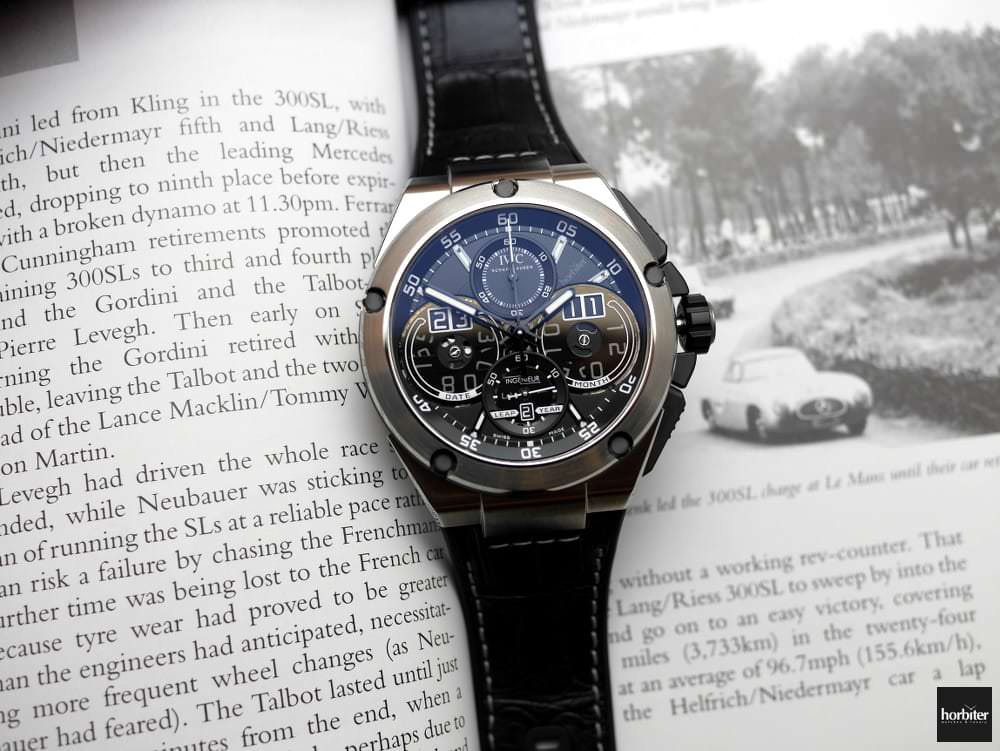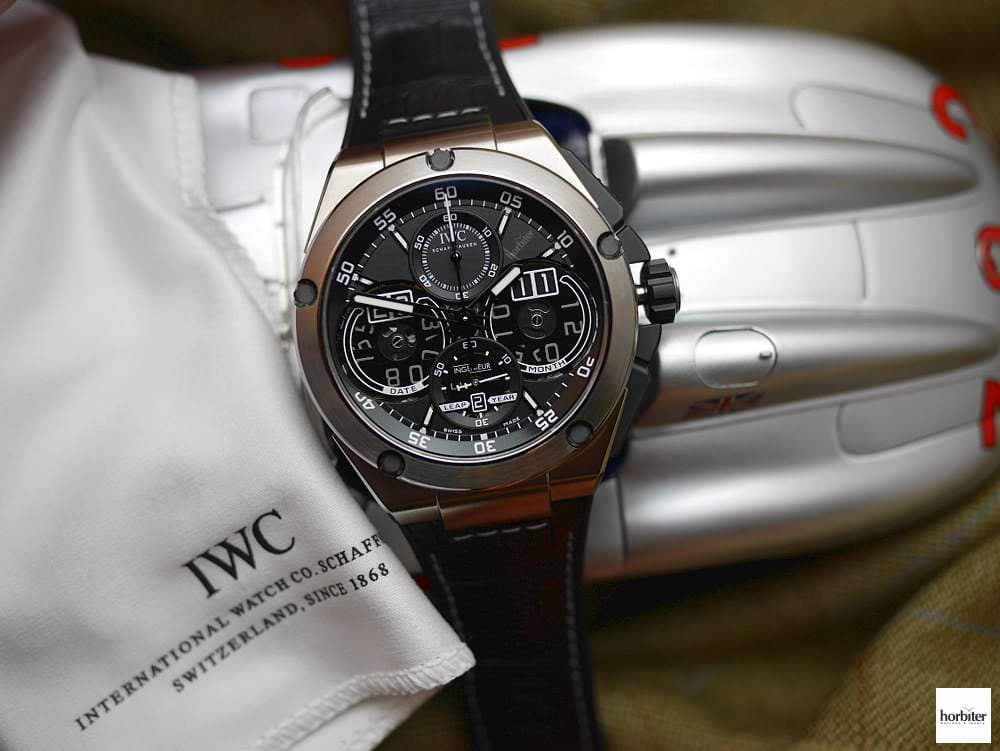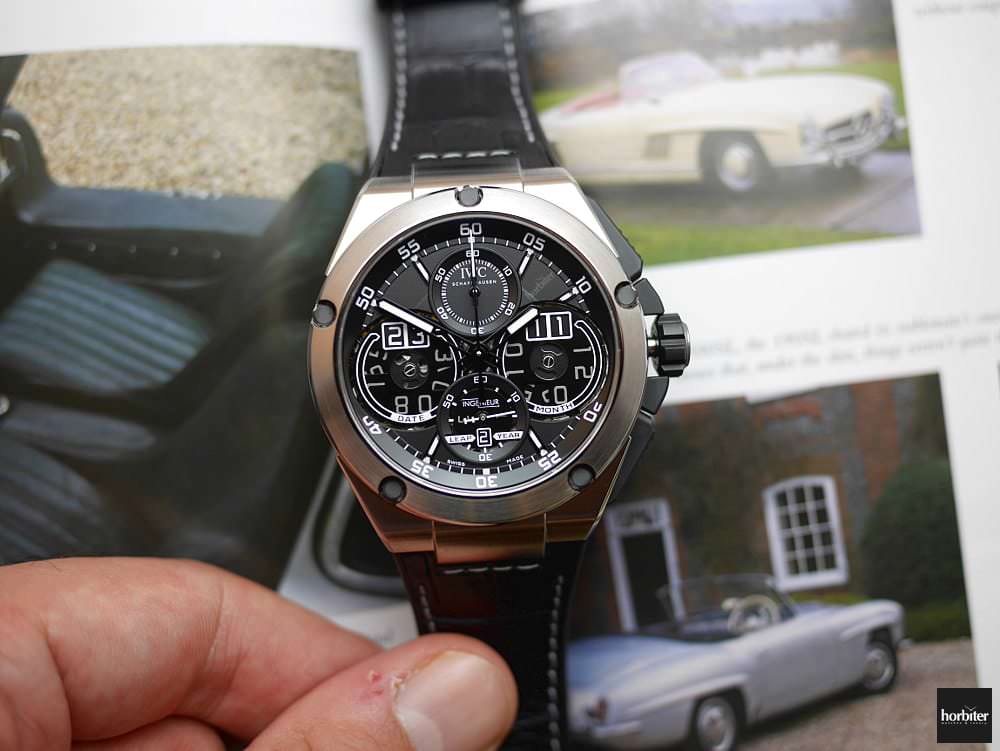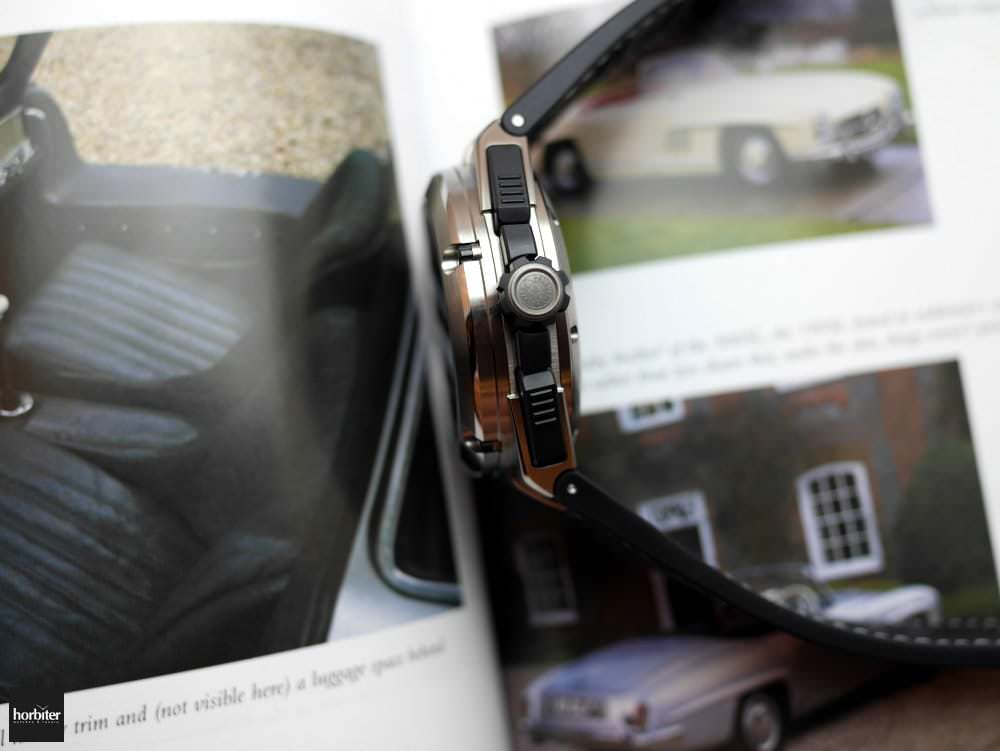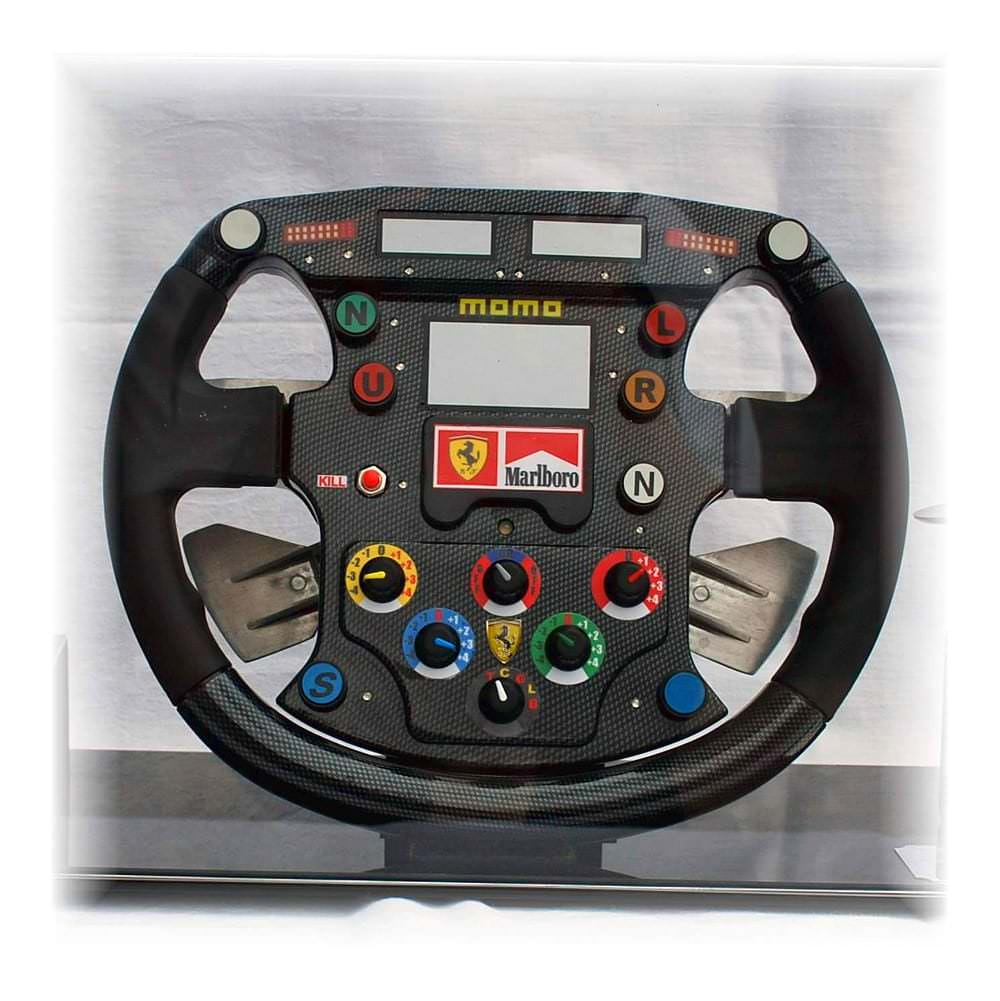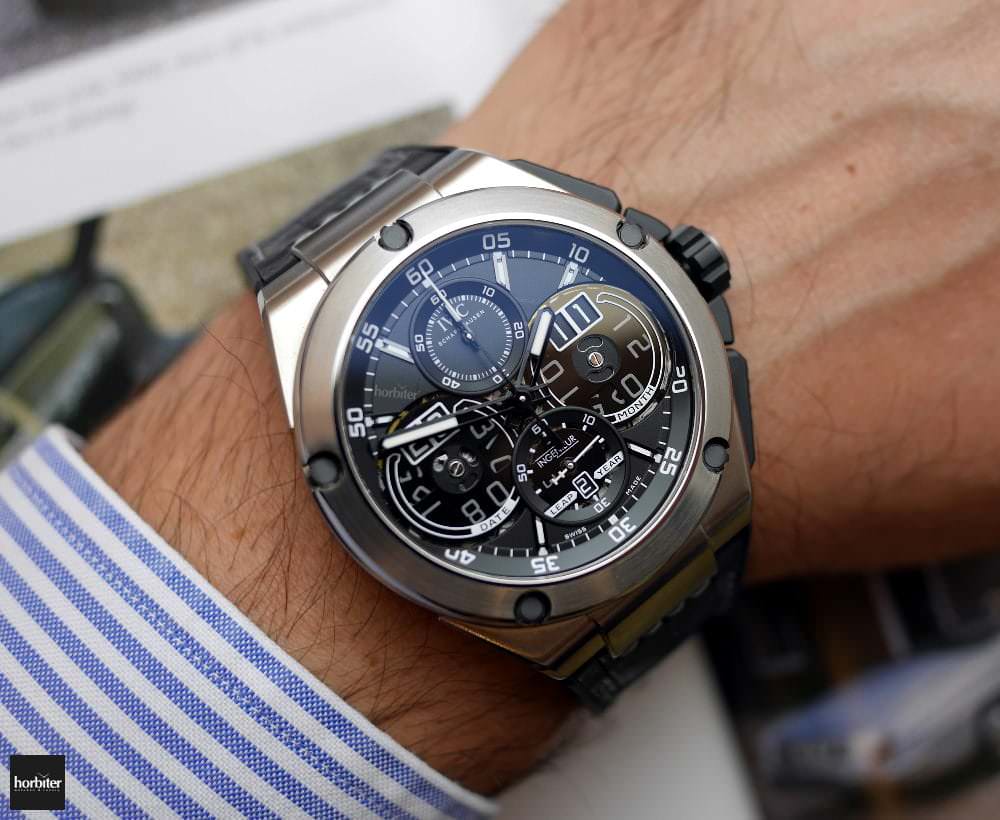Three years ago, my knowledge of the Ingenieur collection by IWC was limited to “reference 1832”, the Ingenieur SL. Raffaella, a friend of mine and a partner in the Horbiter project, she owns one and together we took it to the IWC Boutique in Piazza di Spagna for a general overhaul. She cherishes it jealously, as it became a collector’s piece, the first true Ingenieur, designed by Gerald Genta. My familiarity with this collection has grown over the years, at the same time as IWC has revolutionized it.
What is the main esthetical and technical difference from an IWC Pilot Top Gun Perpetual Calendar (and a Spitfire Perpetual Calendar Digital Date-Month too?) The best time to find out might be the 31st of December at midnight: in that precise moment, all the discs rotate simultaneously (and are fully visible) updating day, month as well as the leap year indication, placed in a counter at 6. A layout that, for a moment, would make you think you are wearing a watch with an un-destructured hours visualization, if it wasn’t for the central hours and minutes hands, and a small counter at 12, for tracking chrono minutes and hours, of the Flyback chronograph.
(Photo credit: Google; Horbiter®’s proprietary photo-shooting)
Gaetano C. @Horbiter®

